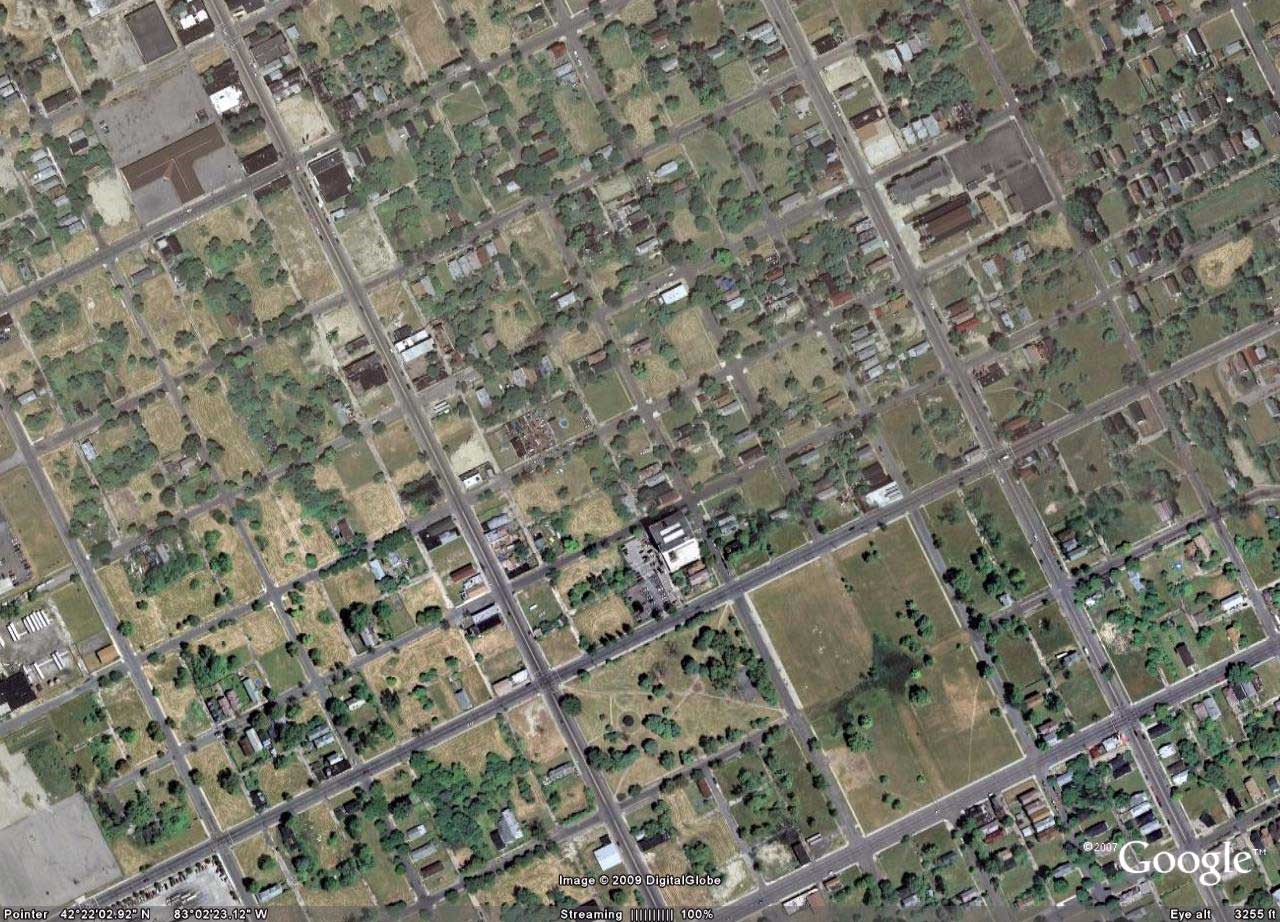Detroit, MI
Cars, roads, suburbanization, and eminent domain: Jefferson Village
A lot of people would not have gone. They loved what they had. I did, for example. …. The powers that be had said that we can’t stay there though. We had to get out.
I resented that really—that they could take my property and give it to another private industry so that other people could use it for the same way that I was using it for. That was my beef—that they had a right to take mine, and give it to somebody else to use it for the same purpose.
—Ken Walker, resident who sold house to developer knowing it would otherwise be taken by eminent domain
The advent of mass production of the automobile in the early 20th century and the subsequent construction and expansion of roads on which those automobiles traveled, has meant that cars, roads, and eminent domain have been closely linked for more than a century. The post-World-War II suburban boom and related population exodus from central cities was largely facilitated by cheap mortgages, new high-speed roads (interstates), and more cars to transport people using those roads. During the building of the Interstate system in the Eisenhower administration over 750,000 parcels of land were taken over through eminent domain.[1]

This suburbanization process was directly related to central cities’ steady loss of population, jobs, and tax base after World War II. In particular this process factors heavily in the decline of many Northeastern and Midwest cities. No other city symbolizes the automobile related boom-bust cycle more than Detroit, America’s Motor City. After growing to a population of 1.86 million in 1950, by 2012 Detroit only had 700,000 residents. Many once vibrant blocks in the city are near empty, with grass lots where houses once stood and boarded up houses in other spots. The Google map image below shows a typical emptied-out square mile of Detroit with city lot after lot houseless parcels where more dense communities once existed.

For much of the last quarter of the 20th century, city leaders were seeking ways of attracting people back into Detroit. Engaging in no small measure of irony, government and business leaders in Detroit attempted to create a suburban community next to Detroit’s downtown at the turn of the 21st century. The fact that the lead developer was the largest homebuilder in the United States and had been a major corporate player in post-World-War-II suburban construction, added to the irony. Using eminent domain as a key development tool—a tool more characterized as a “stick” by some existing residents—developers and city partners cleared away what had been an old, deteriorating, and more densely populated neighborhood to make way for a new suburb-like Marina District. The land was cleared successfully. However, in continuing testimony to the challenges blocking Detroit’s comeback, the project has never been fully realized. By the end of the first decade of the 21st century, Detroit once again found itself on the front lines of a national economic crisis. This time it was the national housing financing collapse and subsequent downturn of the economy.
 © Richard Wasserman, 2010
© Richard Wasserman, 2010
[1] Josh Stephens, “Reclaiming the Interstates from Ike,” Book review of Earl Swift. 2011. The Big Roads: The Untold Story of the Engineers, Visionaries, and Trailblazers Who Created the Superhighways. Boston:Houghton Mifflin Harcourt. California Planning & Development Report, vol 26, No. 22, November 15, 2011. http://www.cp-dr.com/articles/node-3066. Accessed January 31, 2016.
[2] Detroit Public Library Digital Collections, John D. Lodge Expressway in Detroit 1953. http://digitalcollections.detroitpubliclibrary.org/islandora/object/islandora%3A218834. Accessed February 28, 2016.
[3] Denverinfill Website. http://denverinfill.com/blog/2008/12/lessons-from-detroit.html. Accessed February 28, 2016.

